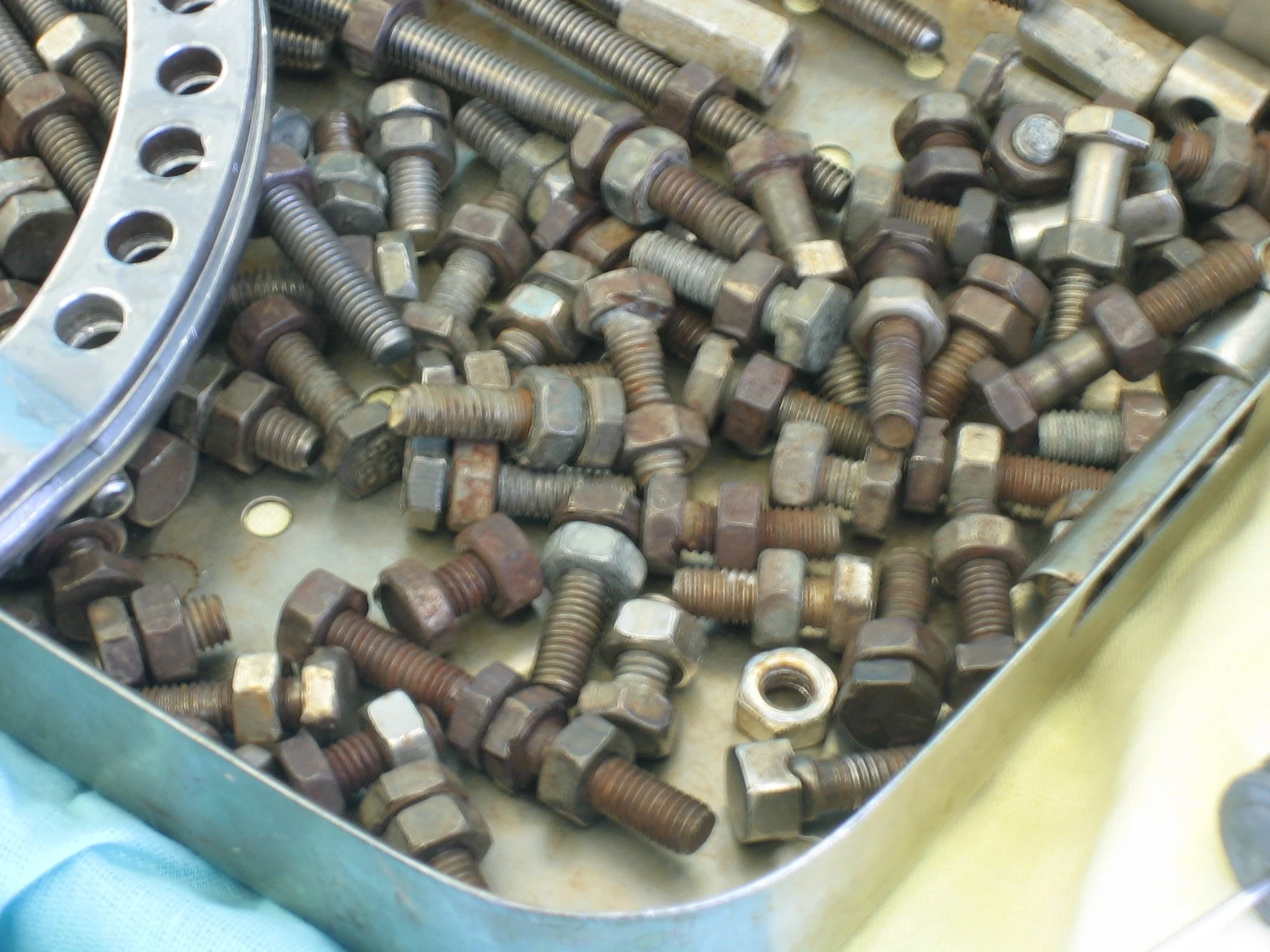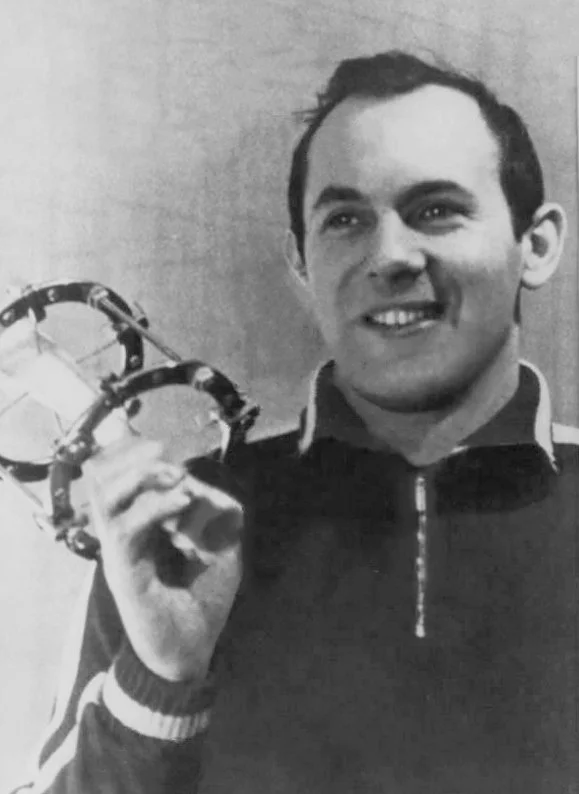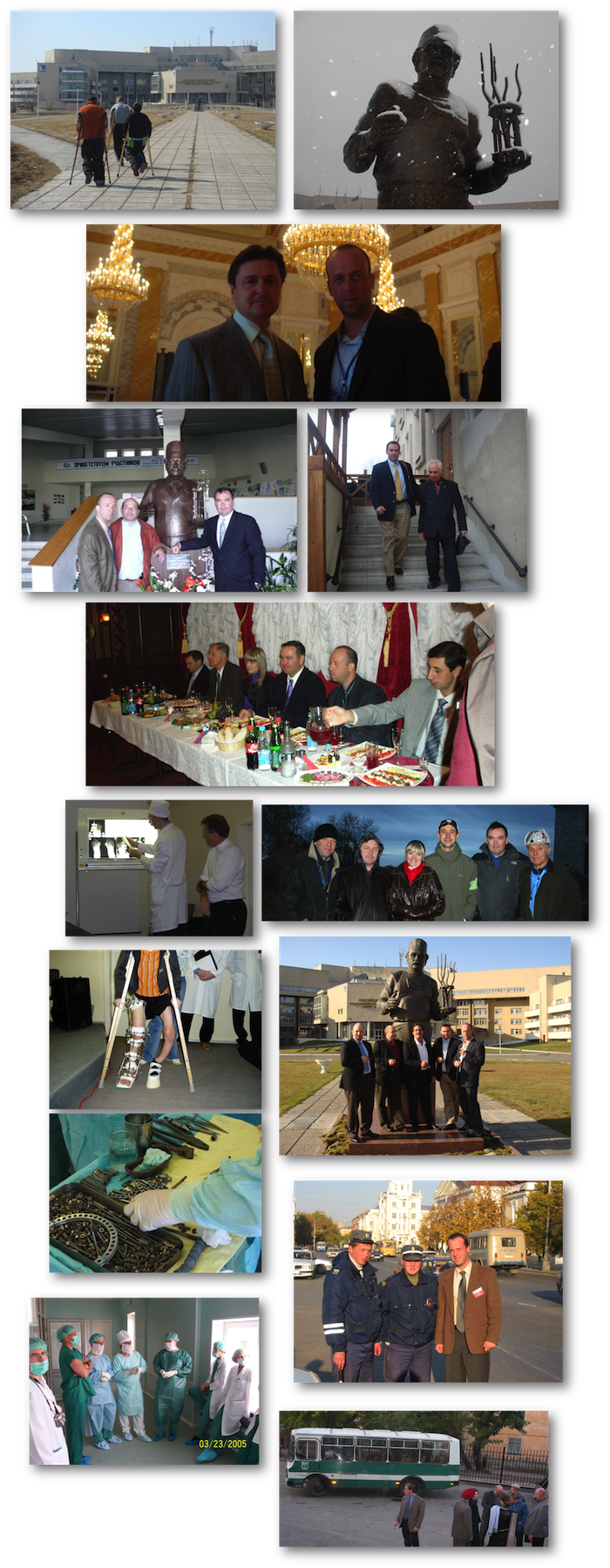ILIZAROV EXTERNAL RING FIXATION
Dr. Gitlin is currently one of the few practitioners left of the classic ilizarov technique. From 2005 to 2015 he worked with the Ilizarov Hospital in Kurgan, Russia to train American doctors in this complex technique. Why are there so few doctors who are trained in it? - it is hard to learn and even harder to teach, and a firm grasp of surgical technique and the use of external fixation is a necessary prerequisite. Dr. Gitlin has published new advances in the technique in medical journals and holds a number of patents in novel modifications of external fixation.
What is it anyway?
After the end of World War two in 1945, factories in the Soviet Union that made tanks to fight the Germans gradually were repurposed to build farming equipment and other ‘peacetime’ uses. There was a town in the middle of the country called Kurgan, even though it was far from the biggest cities in was a place where railroads from the east crossed into the west along the trans-siberian railway. Many WW2 veterans went to work in these factories and in the agricultural areas surrounding. There were not many doctors around and you can imagine there were many industrial accidents happening as well as the significant amount of injured war veterans in the area. Many injuries were orthopedic in nature - effecting the bones and joints.
Gavril Ilizarov was general medical doctor in the area who was treating these war wounded and in the late 1940s he came up with the external fixator that later came to bear his name. In 1952 he was granted a Russian patent for his device. His device was like a scaffold on a building that holds up the walls during construction. Here are two images of the earliest designs, not too much different than todays embodiment.
The Ilizarov fixator holds the bones in proper position to allow them to heal. the only part of the fixator that attached to the bones are skinny wires about the thickness of a pencil lead ( about 2 mm). The actual fixator that sits outside of the body like in images below can be reused, all that needs to be made new are the wires. Even though bone screws and plates were already being used around the world at the time (started in Switzerland in 1958 - click here to read all about that ) these we hard to produce and needed proper metals and a level of sterility to manufacture and implant. Those limitations made it difficult to produce those surgical implants in Russia after world war two. The external fixator parts were reused again and again. And they are modular and can be put together in any construction to treat any part of the body, a leg, a foot, a hand ,a head , a spine etc. Like an erector set from when you were kids.
rusty but usable
rusty nuts and bolts
this photograph above is not of Dr. Ilizarov, but it is one of our favorite instructors, Dr. Nikolai Murzikov MD, at the Ilizarov hospital in Kurgan in 2008.
The ilizarov external fixator was novel in its appearance and usability and over the next few years its applications broadened to include repairs of non healing bones, severe trauma surgery and deformity correction. But the fixation device was not the most important contribution of Ilizarov. Sometime in the later 1950s he was performing a procedure on a patient to lengthen an amputation stump
I am working on this page in the meantime call us if you need us !!!!
Valery Brumel
Ilizarov and patient explorer Thor Heyerdahl smoke break
Lets make this easier to navigate:








